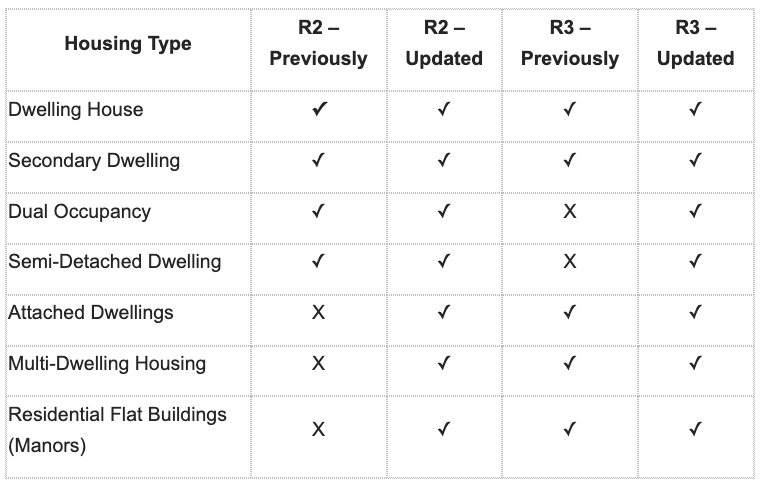Lake Macquarie City Council has introduced a significant update to its residential zoning framework, marking a shift in how development will proceed across the region. The amendments affect R2 (Low-Density Residential) and R3 (Medium-Density Residential) zones, allowing for a broader mix of housing types. These changes form part of a long-term strategy to manage population growth and diversify housing across Lake Macquarie.
Whether you're a homeowner, investor, or developer, it's important to understand how these changes affect development options and future land use.
What Has Changed?
The Council's planning reforms have expanded the types of residential dwellings permitted in R2 and R3 zones. While R3 zones already allowed a range of medium-density dwellings, the most notable changes have occurred in R2 areas, which previously had more limitations.
Previous vs Updated Zoning Permissions
Why Has the Council Made These Changes?
Lake Macquarie is forecast to gain around 28,000 new residents over the next 15 years. This will require approximately 13,500 new homes. The planning changes aim to:
- Introduce greater housing diversity in previously low-density areas
- Make better use of existing infrastructure, especially near public transport and commercial hubs
- Support housing affordability and more inclusive residential development
- Align with NSW Government objectives around Transport-Oriented Development (TOD), particularly in areas like Cardiff, Morisset and Booragul
What Do These Changes Mean for Property Owners and Investors?
Homeowners in R2 Zones
- You may start to see a wider range of housing styles in your suburb, including terraces, townhouses, and small flat buildings
- Development applications may increase, potentially changing the character of some neighbourhoods
Investors and Developers
- R2 zoning now allows for dual occupancies, townhouses, and even smaller residential flat buildings, increasing development flexibility
- This opens up higher-yield development opportunities on blocks previously limited to single dwellings
- R3 continues to support medium-density development, especially suited to sites near key services and public transport
Buyers and Tenants
- Expect a wider range of housing options at more accessible price points
- New supply may include duplexes, manor homes and apartment-style residences in areas that have traditionally only supported detached homes
Strategic Impact for Lake Macquarie
The planning changes encourage sustainable growth by focusing new development near established centres with public transport and services. Areas such as Charlestown, Cardiff, Morisset and Glendale are expected to experience earlier and more noticeable changes, with developers targeting these zones for their increased development potential.
Checking Your Zoning and Next Steps
To see what zoning applies to your property and what's now permissible:
- Visit the Lake Macquarie City Council website and search your property with the following link: https://www.lakemac.com.au/Development/Planning-and-development-services/Property-Enquiry
- Review the updated Local Environmental Plan (LEP) amendment RZ/4/2023.
- Speak with a town planner or Century 21 Novocastrian to understand how these changes may affect your property's potential or value.
Summary
Lake Macquarie's new zoning rules provide more flexibility in low-density areas and support more diverse housing options across the city. These updates could open up new opportunities for you and the potential of your property.

